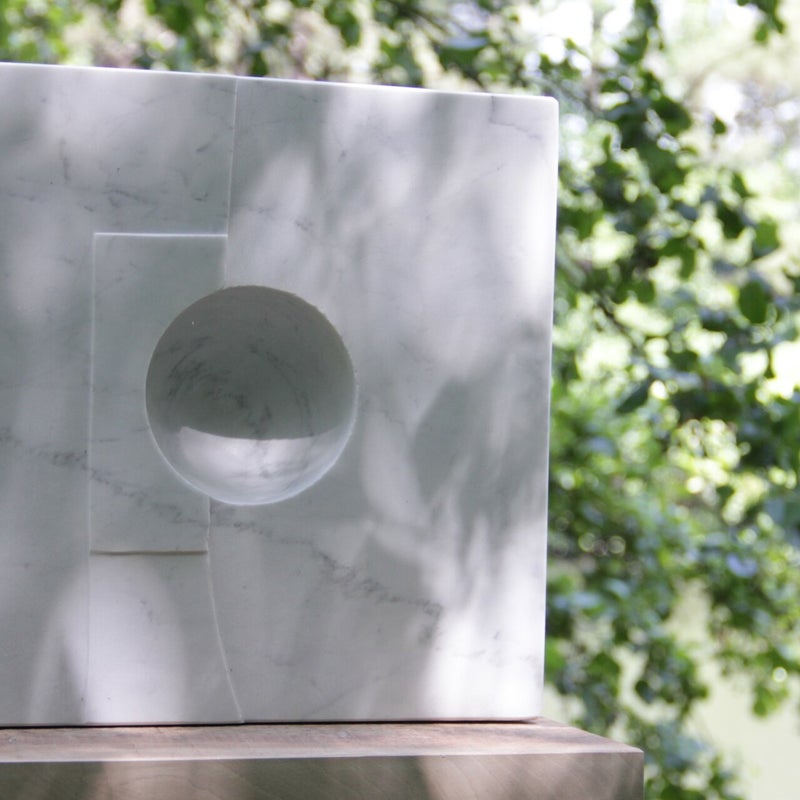In 2007 when Luc De Man started experimenting with the idea that the cube could be seen as a symbol of human activity and the sphere as a symbol of nature, he had no intention of creating an extensive series whatsoever. After all, he was only looking for the perfect balance between man and nature; between male and female, between yin and yang. When Cubes #6, a name that would only be awarded years later, was chosen as the basic model for a permanent work in the city of Dendermonde, the artist was convinced that this was the crowning glory and thus the final piece of his study. However, it turned out to be the start of the 'Cubes' series.
The first models were made of wood because this choice of material reinforces the natural element in the sculpture. But that’s not all. Cubes were successively created in Mazy, Carrara marble, Corten steel and stainless steel.
Where the presence of nature was initially confirmed by a sphere and by the wood, new references to nature have been introduced. A recurring element is the Fibonacci series. This mathematical series, also known as the law of natural growth, is widely used and results in the Fibonacci triangle. In the sculptures or installations where this triangle is added, the triangle functions as the final piece of the whole work. It is a reference to nature, but also to growth, evolution and the process of creation. The Fibonacci series is the interface between art and science, that is so characteristic of Luc De Man’s work.












